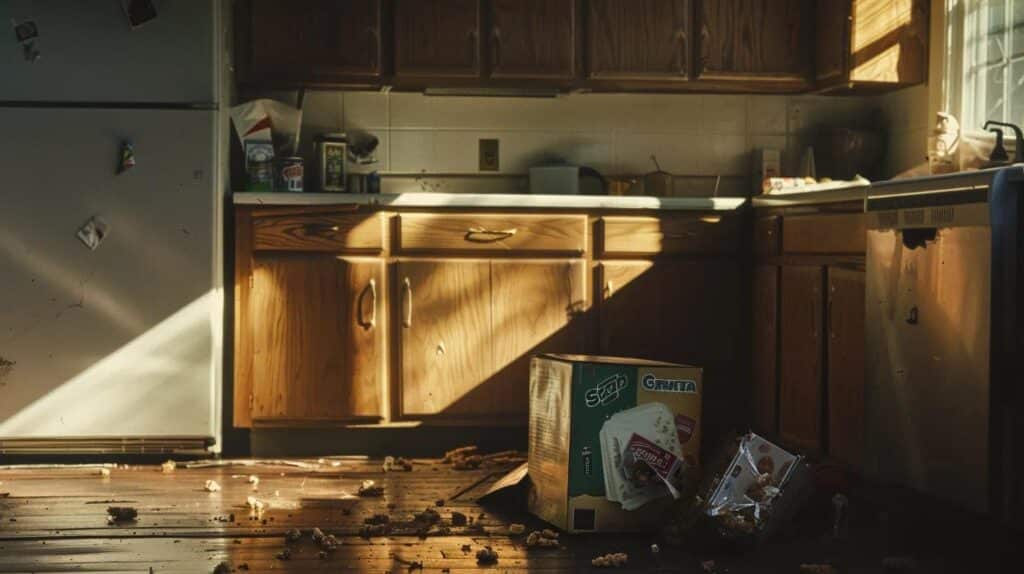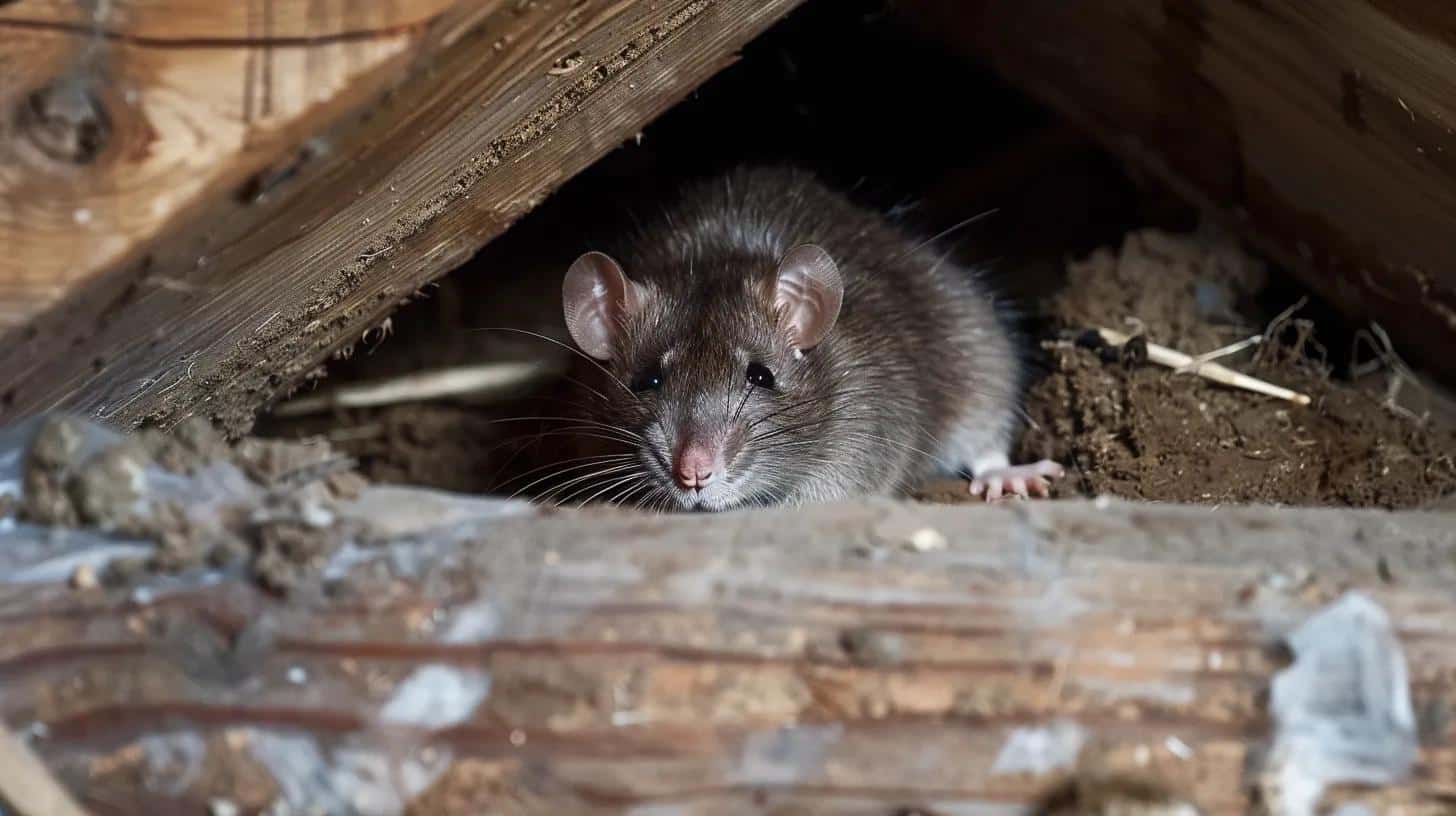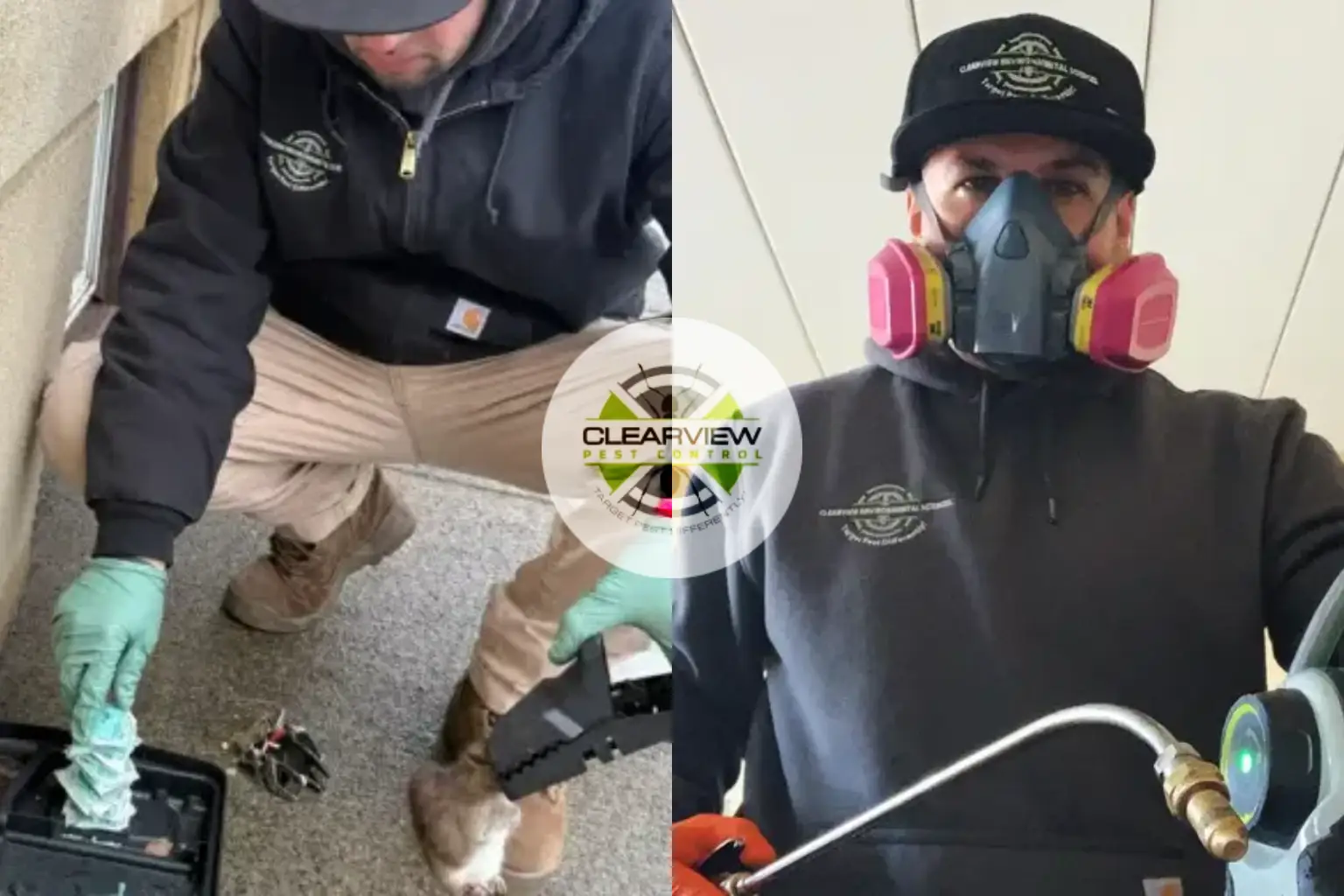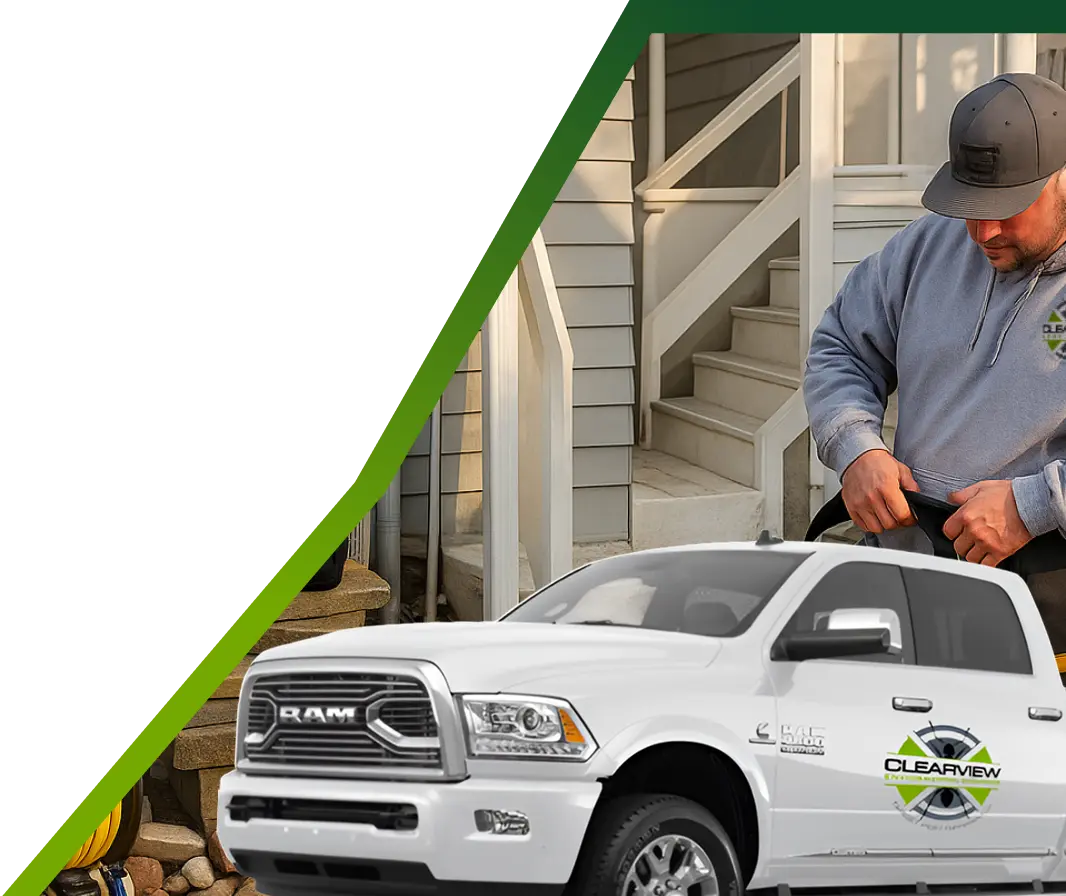
As autumn temperatures begin their steady decline across Hudson County, an annual migration unfolds that most residents don’t see until it’s too late. Rats and mice that spent warmer months thriving in outdoor environments begin an urgent search for winter shelter—and your home represents the perfect sanctuary they’re desperately seeking.
The first cold snap in late September or early October triggers biological imperatives that drive rodents toward any structure offering warmth, food, and protection from harsh winter conditions. Hudson County’s dense urban environment, aging infrastructure, and abundant food sources create ideal conditions for rodent populations that intensify their home invasion efforts as temperatures drop.
Understanding how these persistent pests find their way into seemingly secure homes—and implementing effective prevention strategies before they establish winter residence—can save Hudson County families from months of stress, property damage, and health risks that accompany rodent infestations.
Hudson County presents a particularly complex rodent control challenge due to the convergence of urban density, diverse building ages, transportation infrastructure, and waterfront proximity that creates perfect conditions for large, persistent rodent populations.
Urban Density Advantages: The county’s 12 municipalities include some of New Jersey’s most densely populated communities, including Jersey City, Hoboken, and Bayonne. This concentration of human activity provides rodents with abundant food sources, shelter opportunities, and protected travel corridors that sustain year-round populations.
Waterfront Proximity: The Hudson River waterfront and Newark Bay areas provide consistent moisture and food sources that support large rodent breeding populations. These waterfront colonies serve as source populations that continuously pressure inland residential areas.
Transportation Infrastructure: Major rail lines, highway systems, and PATH stations create protected corridors that facilitate rodent movement throughout the county. These infrastructure systems often feature utility tunnels and maintenance areas that rodents exploit for travel and nesting.
Historic Building Stock: Many Hudson County communities feature buildings constructed over a century ago with original foundations, wall systems, and utility penetrations that provide numerous rodent entry opportunities.
Summer Breeding Success: Warm summer months allow rodent populations to reach peak numbers through multiple successful breeding cycles. By early fall, populations are at their highest annual levels just as cooler weather triggers indoor migration.
Fall Migration Pressure: Temperature drops below 50°F trigger physiological responses that drive rodents to seek indoor shelter. This migration typically intensifies during September and October as rodents prepare for winter survival.
Winter Establishment: Rodents that successfully establish indoor residence during fall create protected breeding populations that continue reproducing throughout winter months in the warm environment homes provide.
Spring Expansion: Indoor populations that survive winter emerge in spring to join outdoor populations, creating exponentially larger summer breeding populations that increase the following fall’s invasion pressure.
Effective rodent prevention requires understanding the biological capabilities and behavioral patterns that make rats and mice such successful home invaders in Hudson County’s urban environment.
Size Deception: Despite their appearance, rodents can squeeze through remarkably small openings due to their flexible skeletal structures and compressible bodies.
Mice Entry Size:
Rat Entry Size:
Climbing and Jumping Abilities:
Tactile Guidance: Rodents navigate primarily through whisker contact with surfaces, allowing them to travel confidently in complete darkness through established routes.
Scent Following: Urine trails left by previous rodents create chemical pathways that guide subsequent individuals to successful entry points and resource locations.
Memory and Learning: Rodents possess excellent spatial memory and quickly learn building layouts, escape routes, and resource locations that they share socially with other colony members.
Exponential Growth Potential: Understanding rodent reproduction rates emphasizes the urgency of early intervention before populations establish:
House Mouse Reproduction:
Norway Rat Reproduction:

Hudson County homes provide numerous access opportunities that rodents exploit during their fall migration. Understanding these entry points allows residents to implement targeted prevention measures.
Foundation Cracks and Gaps:
Basement Window Wells:
Crawl Space Vents:
Utility Penetrations:
Siding and Exterior Wall Gaps:
HVAC and Ventilation Systems:
Deck and Porch Structures:
Roof Vulnerabilities:
Chimney Access:
Roof Drainage Systems:
Understanding why rodents choose specific properties during their fall migration helps Hudson County residents assess their vulnerability and implement targeted prevention measures.
Food Source Availability:
Water Access:
Shelter Opportunities:
Protected Travel Routes:
Age and Maintenance Status: Older Hudson County homes typically feature more entry opportunities due to:
Construction Type Factors:
Effective rodent prevention requires comprehensive approaches that address all potential entry points and eliminate conditions that attract and sustain rodent populations.
Foundation Perimeter Protection:
Utility Entry Protection:
Vent and Opening Protection:
Door and Window Sealing:
Vegetation Control:
Storage and Clutter Management:
Food Source Elimination:
Drainage and Moisture Control:
Food Storage Protocols:
Clutter Reduction:
Sanitation Standards:
When prevention measures prove insufficient or rodents have already established residence, professional intervention provides comprehensive solutions that address both immediate elimination and long-term protection.
Comprehensive Property Evaluation: Professional rat and mice control begins with thorough inspection to identify active rodent presence, entry points, attractants, and conditions requiring attention.
Technology-Enhanced Detection:
Species Identification: Accurate identification of rodent species present allows implementation of targeted strategies based on specific behavioral patterns and biological requirements:
Norway Rats (Rattus norvegicus):
Roof Rats (Rattus rattus):
House Mice (Mus musculus):
Strategic Trapping Programs: Professional trapping uses specialized devices and strategic placement based on rodent behavior patterns and travel routes:
Snap Trap Applications:
Live Capture Methods:
Targeted Baiting Systems: When trapping alone is insufficient, professional-grade rodenticides provide supplemental control:
Bait Station Deployment:
Formulation Selection:
Comprehensive Entry Point Elimination: Professional repairs and exclusions services address structural vulnerabilities that allow rodent access:
Professional-Grade Materials:
Permanent Installations:
Contamination Removal: Professional cleanup addresses health risks from rodent waste and contamination:
Waste Removal:
Sanitization:
Insulation Replacement: When rodents have contaminated attic or wall insulation:
Understanding the serious health risks associated with rodent infestations emphasizes the importance of rapid professional intervention when problems are discovered.
Direct Contact Risks:
Indirect Transmission:
Hantavirus Pulmonary Syndrome: Potentially fatal respiratory disease transmitted through inhalation of aerosolized rodent waste particles.
Leptospirosis: Bacterial infection transmitted through contact with water or soil contaminated by infected rodent urine.
Salmonellosis: Food poisoning resulting from consumption of food contaminated by rodent droppings or urine.
Rat-Bite Fever: Bacterial infection transmitted through bites, scratches, or contact with dead rodents.
Lymphocytic Choriomeningitis: Viral infection transmitted through exposure to fresh rodent urine, droppings, or nesting materials.
Successful rodent control in Hudson County requires ongoing vigilance and periodic professional assessment to address changing conditions and prevent new infestations.
Fall Prevention Inspections (August-September): Pre-migration inspections identify and address vulnerabilities before rodent pressure intensifies.
Winter Activity Monitoring (December-February): Mid-winter assessments detect any rodents that successfully established indoor residence.
Spring Emergence Evaluation (March-April): Post-winter inspections identify damage and necessary repairs before outdoor populations increase.
Summer Maintenance (June-August): Warm-weather assessments address any summer intrusions and prepare for fall migration.
Regular Inspection Schedules: Incorporate rodent vulnerability assessment into routine home maintenance:
Proactive Repair Programs: Address minor issues before they become rodent entry opportunities:

As cooler weather approaches Hudson County, the annual rodent migration toward indoor shelter creates urgent challenges for homeowners and renters throughout the region. Understanding how rats and mice infiltrate seemingly secure homes and implementing comprehensive prevention strategies before they establish winter residence provides the foundation for effective rodent control.
The unique challenges presented by Hudson County’s urban density, aging building stock, and waterfront location create persistent rodent pressure that requires vigilant prevention and professional expertise when problems develop. What begins as a single mouse seeking warmth can rapidly escalate to multiple-generation infestations that cause thousands of dollars in damage while threatening family health and safety.
At Clearview Pest Control, we understand the specific rodent challenges that Hudson County residents face during the critical fall migration period and throughout the year. Our comprehensive rat and mice control services combine advanced inspection technologies, proven elimination methods, and permanent exclusion solutions that address both immediate rodent problems and long-term prevention needs.
Our integrated approach recognizes that successful rodent control requires more than just trapping or baiting visible animals—it demands comprehensive property assessment, strategic treatment planning, professional-grade materials and methods, and ongoing monitoring that ensures complete elimination and prevents future infestations.
Whether you’re implementing preventive measures before the fall migration intensifies or addressing existing rodent activity, professional expertise provides the effectiveness and reliability that DIY approaches cannot match. Our experienced technicians understand rodent behavior patterns, building vulnerabilities specific to Hudson County construction, and the most effective strategies for achieving lasting results.
Don’t wait until rodents establish winter residence in your home’s walls, attics, or basements. The most effective and economical rodent control begins with prevention during late summer and early fall before migration pressure peaks. Once rodents establish indoor populations, elimination becomes significantly more complex and costly.
Contact Clearview Pest Control at (347) 224-2581 or visit our contact page to schedule a comprehensive rodent vulnerability assessment and prevention consultation. Our 24-hour availability ensures that urgent rodent situations receive immediate professional attention, preventing minor intrusions from becoming major infestations.
Protect your Hudson County home from the health risks, property damage, and stress associated with rodent infestations. Professional rodent control provides the comprehensive protection that your family and property investment deserve—starting with prevention and backed by guaranteed elimination when necessary.
Take control of your property’s rodent challenges today, before cooler weather drives rats and mice toward the warmth and shelter your home provides. Your family’s health, your property’s integrity, and your peace of mind depend on effective rodent prevention and professional expertise when problems arise.
Clearview Pest Control specializes in comprehensive rodent control solutions for Hudson County residents, providing effective prevention strategies, advanced elimination methods, and permanent exclusion services that protect homes throughout Jersey City, Hoboken, Bayonne, and surrounding communities from the health and safety risks associated with rat and mouse infestations.
License
Address
182 W 31st St, 2nd Floor, Bayonne, NJ 07002
61 W Palisade Ave #2B, Englewood, NJ 07631
551west 181st. Street Suite#120 New York, NY 10033
